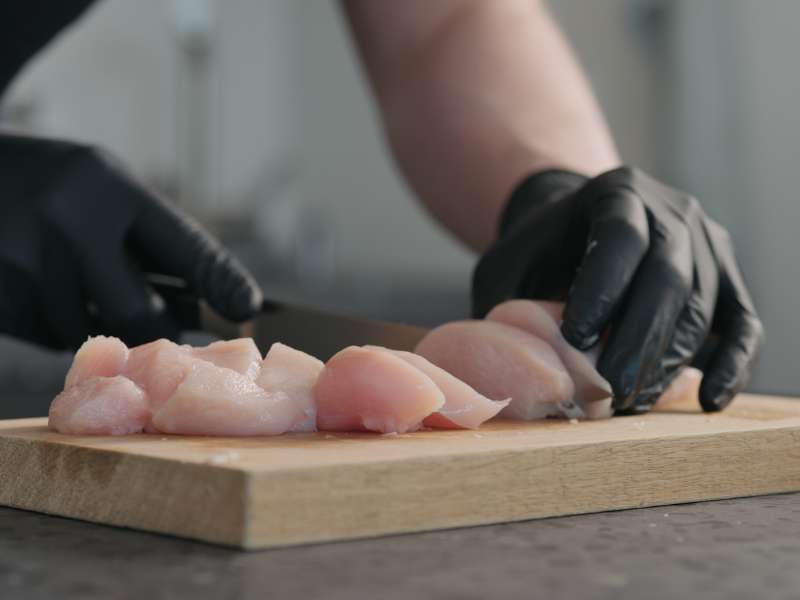Running a tight front and back of the house can feel like you have a lot of plates spinning. By improving efficiency, communication, and training you can put together a cohesive crew to keep guests happy and business running smoothly.
While labor and food costs continue to be at the top of restaurant challenges, having your front of house and back of house work collaboratively and efficiently is also a high priority. It makes or breaks a guest experience, influences work culture and employee morale, and impacts your reputation. However, by addressing communication issues and setting up efficient systems as you onboard and train employees, you can create a workplace that runs smoothly with less turnover and better employee and guest experiences. Check out our quick guide below for tips on successful FOH and BOH strategies.
Train, Train, Train
Onboarding is key to setting the right tone between the front and back of the house. Before you begin training, set the tone with a professional, polished application and interview process that includes buy-in and perspectives from representatives of your FOH and BOH.
Once you’ve brought on a new team member, designate the right people as trainers. Look for employees with consistently positive attitudes and good problem-solving skills to take on this key role. Create an open line of dialogue between management and trainers so that you can address any challenges as soon as they arise. Improve employee engagement and strengthen communication with help from tech companies like Performance Foodservice’s One Source partner, HotSchedules by Fourth Solutions, the team behind an industry-leading employee scheduling and management app.
Emphasize Cross-Training
The main issue between FOH and BOH is that, often, these jobs don’t overlap. For this reason, it’s important to cross-train employees in multiple positions. Even if they will never actually work those positions, by shadowing for a few hours or days in a different area of the restaurant, those employees will gain invaluable experience and insight into what their coworkers are doing. It helps to reinforce the idea that everyone is on the same team, not two separate teams that happen to be in the same building.
Share and Strategize
Pre-shift and post-shift meetings can help identify challenges, provide an opportunity to praise good work, and help you and your employees stay organized. Consider these meetings as another chance to strengthen the communication between FOH and BOH. Allow time for employees to share what’s on their minds, discuss areas that need more focus, and troubleshoot together to come up with solutions. These meetings should be safe spaces for employees to address whatever concerns they have, and open communication should be encouraged and respected.
All in the Family
If you offer family meals as a perk for your staff, you are already helping to build relationships between FOH and BOH. Emphasize the importance of everyone taking a break to share a meal before service. You can merge this time with your pre-shift meeting so that it’s also a productive time, but the real value here is in allowing your employees to connect before things get hectic.
Cater to the Customer
Communication breakdowns between FOH and BOH can happen through a disconnect around guest expectations. When servers see guests waiting to be seated or waiting a long time for their food, they may get anxious and start ‘stalking’ cooks or inserting themselves in the expo line to try to make things go faster.
Servers and FOH employees are right — wait times can make or break a guest’s experience. Empower FOH employees to accommodate guests in other ways, perhaps offering them a seat at the bar or a basket of bread while they wait (something servers can prepare themselves, ideally). Have a clear chain of command in these instances so servers can express their concerns to a manager or expo chef and work together to identify a solution that doesn’t tax the kitchen even more, leading to mistakes, misfires, and mounting resentment.
Similarly, the kitchen should have a firm grasp on their counts for menu items for the evening. Use a POS system that can track those counts and update servers in real time when there’s a chance that an item might sell out. This will improve guest satisfaction because guests won’t try to order something that’s not available, and it will improve efficiency because servers won’t have to spend time asking chefs if an item has been 86’d yet or not. The Performance One Source partner TouchBistro has a program designed to help restaurateurs streamline operations by providing essential FOH, BOH, and guest engagement solutions on one easy-to-use platform.
Click here for more in-depth resources for both FOH and BOH.



